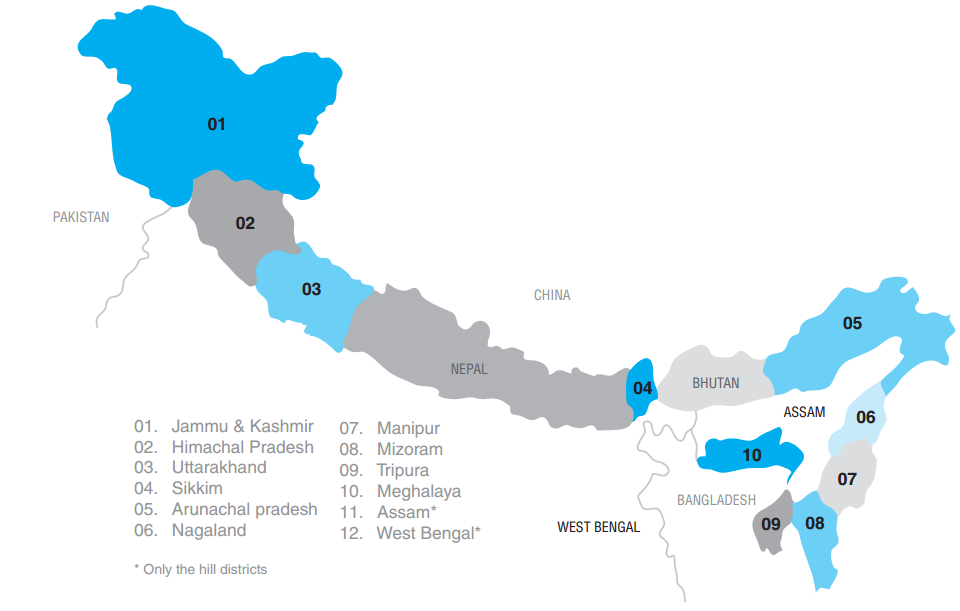7667766266
enquiry@shankarias.in
Himalayan towns face civic issues due to unique challenges, requiring tailored development, but they often lack the necessary funds and resources.
What is Indian Himalayan Region (IHR)?

Note: J&K (as in picture as (1)) bifurcated into UT of J&K and UT of Ladakh in 2019.
The Hindu| Unique Planning for Indian Himalayan Towns